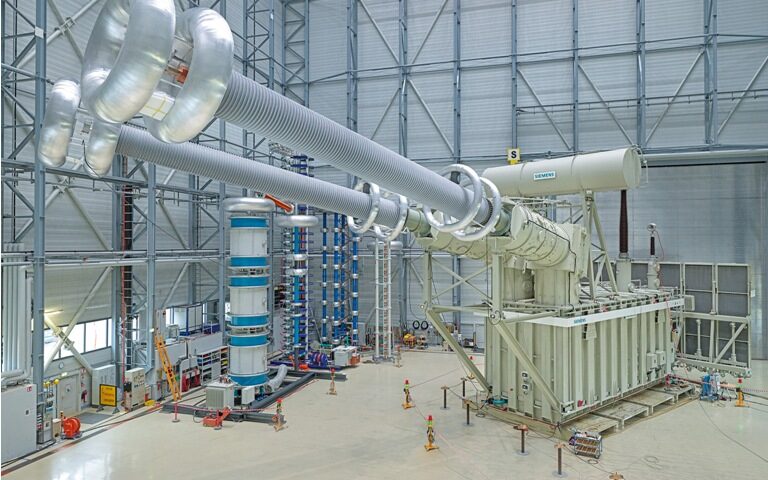There has been welcome news on the high-voltage direct current (HVDC) power transmission front in the past few months. Very recently, the Pugalur-Trichur HVDC line was made fully operational, enabling 2,000 mw of power transfer.
This ±320kV line, running 153km, connecting Tamil Nadu and Kerala is significant on several counts. This line is the first instance in India where modern Voltage Source Converter (VSC) technology has been deployed. This was done to overcome right-of-way constraints.
It is also the first power link in India to have an unusual voltage rating of 320kV. In existing HVDC systems in India, voltages that one has come across so far are 500kV and 800kV. The Pugalur-Trichur has also seen major application of underground EHV cabling. Some 27 km of the total 153km are underground. Once again, this was meant to overcome RoW concerns.
In 2020, some elements of the massive ±800kV Raichur-Pugalur HVDC system were commissioned, enabling large-scale transfer from the Western Region to the Southern Region. On full commissioning, this transmission system running 1,750 km from Chhattisgarh to Tamil Nadu—cutting across Maharashtra, Andhra Pradesh and Telangana en route—will have a rated transfer capacity of 6,000 mw. [The ±320kV Pugalur-Trichur line is an extended component of the ±800kV Raigarh-Pugalur system.]
Interregional transfer from the Raichur-Pugalur line began in September 2020, and close to 4,000 MU was transferred from the Western to the Southern Grid in FY21. With more elements getting operational in March this year, the total transfer from this ±800kV line clocked nearly 1,400 MU in April 2021 alone, making it the amongst the busiest interregional transmission line (AC or DC) in India.
A special study done by T&D India revealed that HVDC systems accounted for 30 per cent of India’s total interregional power transfer during FY21. This proportion is bound to grow in the coming years with more HVDC lines getting commissioned.
Also read: India crosses new milestone in EHV equipment testing
India has targeted to attain 175 GW of renewable energy generation capacity by 2022. Though target attainment may be pushed back by a few years, there is no escape from the fact that renewable energy resources will play a big role in meeting India’s power demand. Given the quintessential intermittent nature of renewable energy, which can potentially cause serious grid disturbances, sophisticated power transmission will be called for. HVDC is one such.
India is also characterized by the fact that power consumption centres (especially northern, western and southern regions) are very distinct from power generation centres, which are the eastern and northeastern regions. Bulk power transmission, with maximum technical efficiency, is indispensable. This also makes a perfect case for HVDC power transmission technology.
(The author of this article, Venugopal Pillai, is Editor, T&D India, and may be reached on venugopal.pillai@tndindia.com. Views expressed here are personal. Featured photograph shows testing of a Siemens 1,100kV HVDC transformer.)

